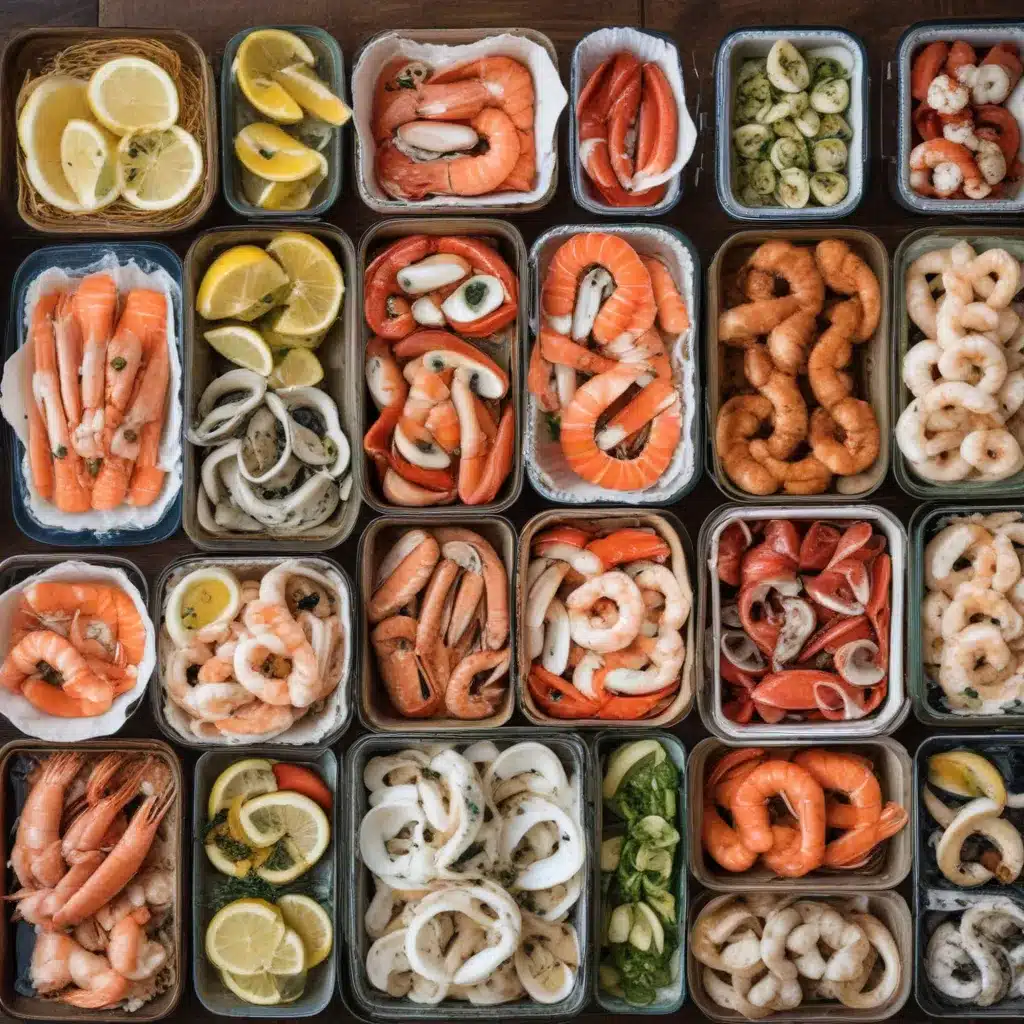
Mastering the art of seafood storage can elevate your culinary prowess and ensure your dishes shine with unparalleled freshness and flavor. Whether you’re working with delicate cod, succulent shrimp, or briny oysters, understanding the nuances of proper refrigeration, freezing techniques, and spoilage prevention is key to unlocking the full potential of your seafood.
Optimal Storage Conditions: The first step in safeguarding your seafood is creating the ideal storage environment. Refrigeration is a must, with temperatures ideally kept between 34°F and 40°F. Anything above 40°F can accelerate the growth of harmful bacteria, compromising both safety and quality. For long-term storage, the freezer is your ally, with temperatures below 0°F halting the clock on spoilage.
Shelf Life Factors: The longevity of your seafood depends on a variety of factors, from the type of fish to its initial freshness. As a general rule, cod and other white-fleshed fish will keep for 3-4 days in the fridge, while oily fish like salmon or tuna may only last 1-2 days. Shellfish, on the other hand, should be consumed within 1-2 days of purchase. Paying close attention to sell-by dates and monitoring for signs of spoilage is crucial.
Preserving Seafood Freshness: Proper storage techniques are essential to maintaining the integrity of your seafood. Invest in airtight containers or resealable plastic bags to lock in moisture and prevent cross-contamination. When freezing, consider flash-freezing for a quicker freeze that preserves texture and flavor. Placing items in the coldest part of the freezer, typically the back, also helps.
Temperature Monitoring: Regularly check the temperature of your refrigerator and freezer to ensure they’re operating within the optimal ranges. Invest in a digital thermometer to make this process simple and accurate. Maintaining consistent temperatures is key to avoiding the dreaded “temperature danger zone” where bacteria can thrive.
Proper Placement: Placement within your refrigerator or freezer matters. Seafood should always be stored on the bottom shelf, preventing any drips or leaks from contaminating other foods. Wrap items individually or place in sealed containers to prevent cross-contamination.
Freezing Methods: For long-term storage, freezing is your best ally. Flash-freezing, where items are frozen at extremely low temperatures, is ideal for preserving the texture and flavor of seafood. Alternatively, the IQF (individually quick frozen) method, which freezes each piece separately, can also work well.
Packaging and Labeling: When freezing seafood, use sturdy, airtight packaging like heavy-duty freezer bags or vacuum-sealed pouches. Squeeze out as much air as possible to prevent freezer burn. Label each package with the contents, date, and any relevant cooking instructions.
Thawing Strategies: Proper thawing is crucial to maintaining seafood quality. The best approach is to transfer frozen items to the refrigerator and allow them to thaw slowly over 12-24 hours. Avoid thawing at room temperature, as this can foster bacterial growth.
Food Safety Guidelines: Always adhere to food safety best practices when handling seafood. Never leave it out at room temperature for more than 2 hours, and discard any items that develop an off odor or slimy texture. Wash your hands and surfaces thoroughly to prevent cross-contamination.
Identifying Spoiled Seafood: Spotting spoiled seafood is crucial to avoiding foodborne illness. Look for discoloration, sliminess, or a pungent, ammonia-like odor. If in doubt, it’s best to err on the side of caution and discard the item.
Mitigating Cross-Contamination: To prevent the spread of bacteria, keep seafood separate from other raw proteins and thoroughly clean all surfaces, utensils, and containers that have come into contact with it.
Cooking Techniques: Mastering various cooking methods, from pan-searing and poaching to baking en papillote, can breathe new life into your seafood. Experiment with bold flavors and global traditions, like ceviche or bouillabaisse, to keep your culinary journey exciting.
Flavoring and Seasoning: Don’t underestimate the power of seasonings and marinades. Herbs, spices, citrus, and even wine can transform even the most basic seafood dish into a flavor sensation. Gluten-free options like coconut aminos or tamari allow those with dietary restrictions to indulge as well.
Serving Suggestions: Complement your expertly prepared seafood with complementary wine pairings and sides that accentuate the natural flavors. A bright, acidic mignonette sauce can elevate oysters, while a creamy risotto or roasted vegetables make the perfect accompaniment to a cod fillet.
Reducing Waste: Minimizing seafood waste starts with smart storage and utilization. Repurpose leftover cooked seafood in dishes like seafood cakes, chowders, or pasta salads. Get creative with trim and scraps, using them to make seafood stock or fish fumet for future preparations.
Healthy and Sustainable Choices: When shopping for seafood, prioritize options that are not only delicious but also nutritious and environmentally responsible. Look for the MSC (Marine Stewardship Council) or ASC (Aquaculture Stewardship Council) certifications, which indicate sustainable fishing and farming practices.
Quick-Chilling Methods: For the freshest possible seafood, consider quick-chilling techniques like ice baths or iced brine to rapidly lower the temperature and lock in flavor and texture. This is especially useful for delicate items like shrimp or scallops.
Moisture Control Strategies: Excess moisture can lead to spoilage and off-flavors. Absorb any excess liquid with paper towels or clean cloth before storing seafood. For cod fillets, try patting them dry with a clean towel before cooking for a delightful crisp exterior.
Odor Elimination Tips: Seafood can sometimes leave lingering odors in your kitchen. Combating this is as simple as wiping down surfaces with vinegar or placing open containers of baking soda in the fridge or freezer to absorb unwanted smells.
By mastering these seafood storage and preparation techniques, you’ll be well on your way to creating mouthwatering, restaurant-quality cuisine at home. Whether you’re whipping up a quick cod dinner or hosting an elaborate lobster feast, the secret lies in understanding how to preserve the freshness and integrity of your seafood. Dive into the world of seafood storage savvy and let your culinary skills shine.

